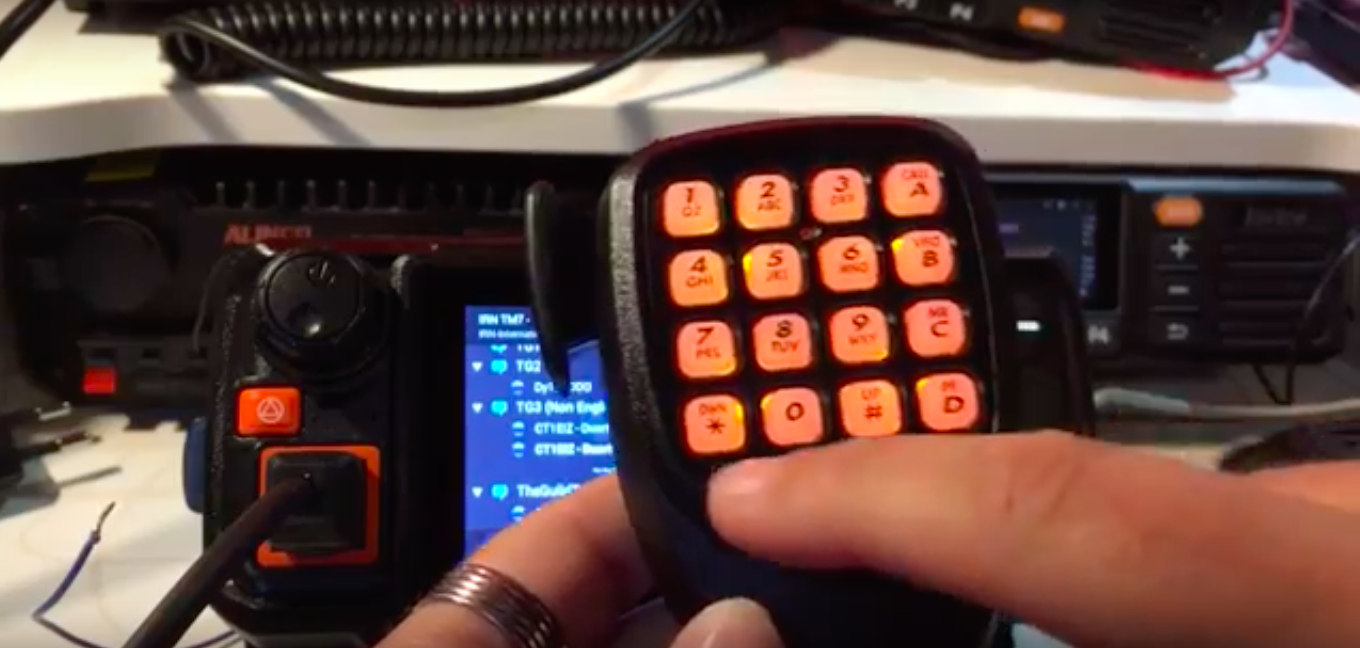
Anysecu 3G-W2 first video review


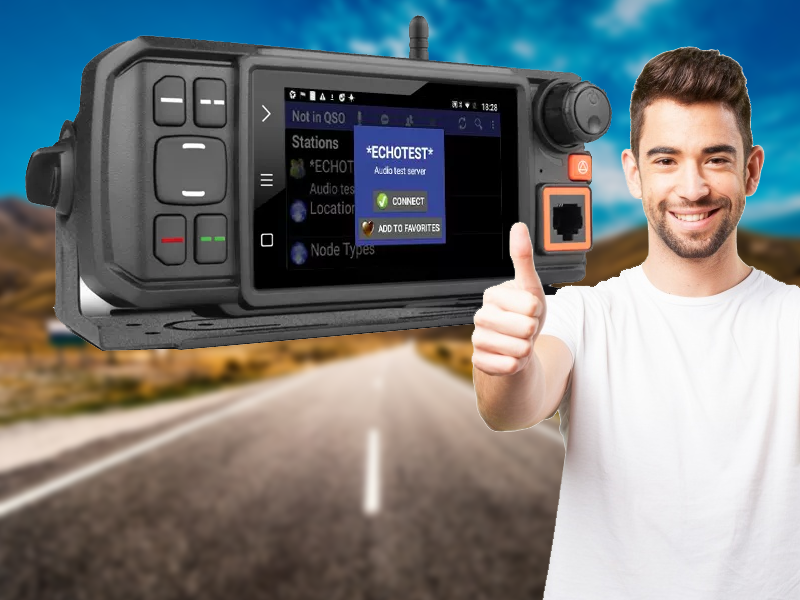
Learn how to win a FREE mobile network radio! It could not be easier! This is a sweepstake for a brand new Anysecu 3G-W2 – The mobile network radio with the biggest display, for easy mobile usage! What are you waiting for?
Terms & Conditions
This is your great chance to win a free network transceiver – the Anysecu 3G-W2
You don’t have to buy anything. All you have to do is to register in our newsletter and you get a free entry to the sweepstake that will occur on the 30/06/2018.
We will contact the winner by e-mail so make sure you add our e-mail address to your contacts so it will not end up in the spam folder. Our e-mail address is info@network-radios.com
But you can increase your chances to win, by earning additional free entries to the sweepstake! See how you can get extra entries:
Once you register, you will get your unique code and you just need to share with your friends. Look how you can increase your chances:
Each referred signup +100 entries
Share on Facebook +10 entries
Share on Twitter +10 entries
Share on Google+ +10 entries
Share on WhatsApp +10 entries
Share on Pinterest +10 entries
Just register below. Once you do it, you can check how many entries you have accumulated! Good luck!
Also read our Privacy Policy and Cookie Policy
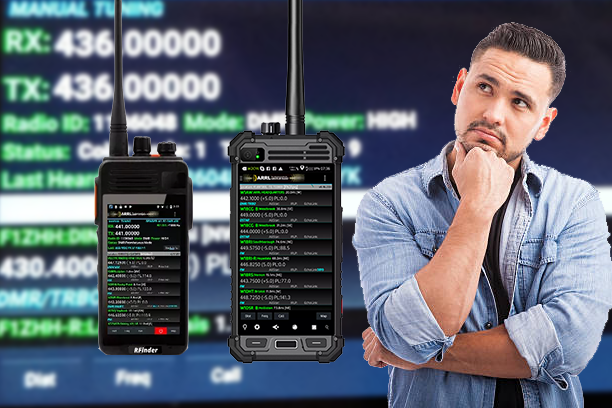
Size matters
The RFinder K1 is smaller than the M1.
Dual SIM card slot
The RFinder K1 has a dual SIM card slot, so you can actually have two different cellphone providers in the same radio and make & receive calls, texts and use data services from both providers.
Optional drop-in charger
It’s probably the most popular accessory for the K1. Just drop it in the charger and go on with your life!
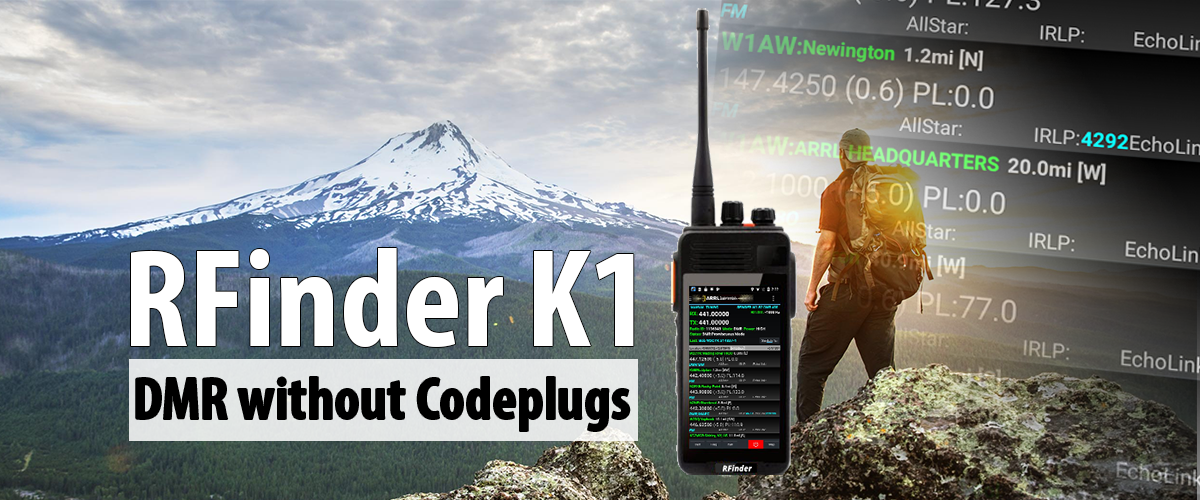
DMR operation is exciting, but dealing with code plugs can be a terrible headache. RFinder makes it easy.
What if you could have a radio with a database of all DMR repeaters that updates continuously and you just have to point and click to change to the right frequency and settings? And this is not only regarding DMR, but also analog repeaters and Echolink nodes.
This is the RFinder concept. DMR made easy! Get your GPS location, find nearby repeaters, select it from the list, and the radio is fully configured!
This 4-Watt Transceiver is also a powerful 4G/LTE Android smartphone and it works well in US/CA, EU, UK, Australia and most countries.
Visit the official RFinder website
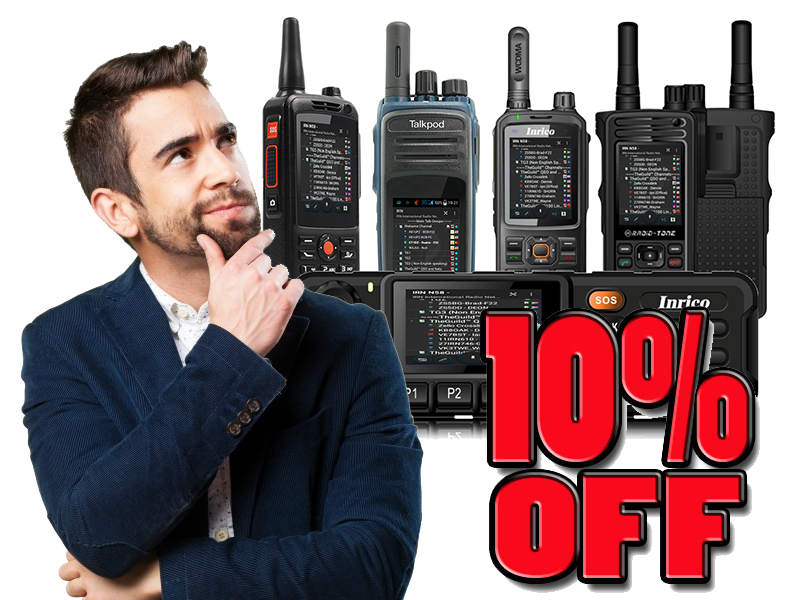
Get any network radio with 10% discount. Still struggling with this technology?
Subscribe our newsletter and learn everything you need to know about Network Radios and get your discount voucher.
Network-radios.com is the first and original website that is 100% dedicated to this amazing branch of amateur radio.
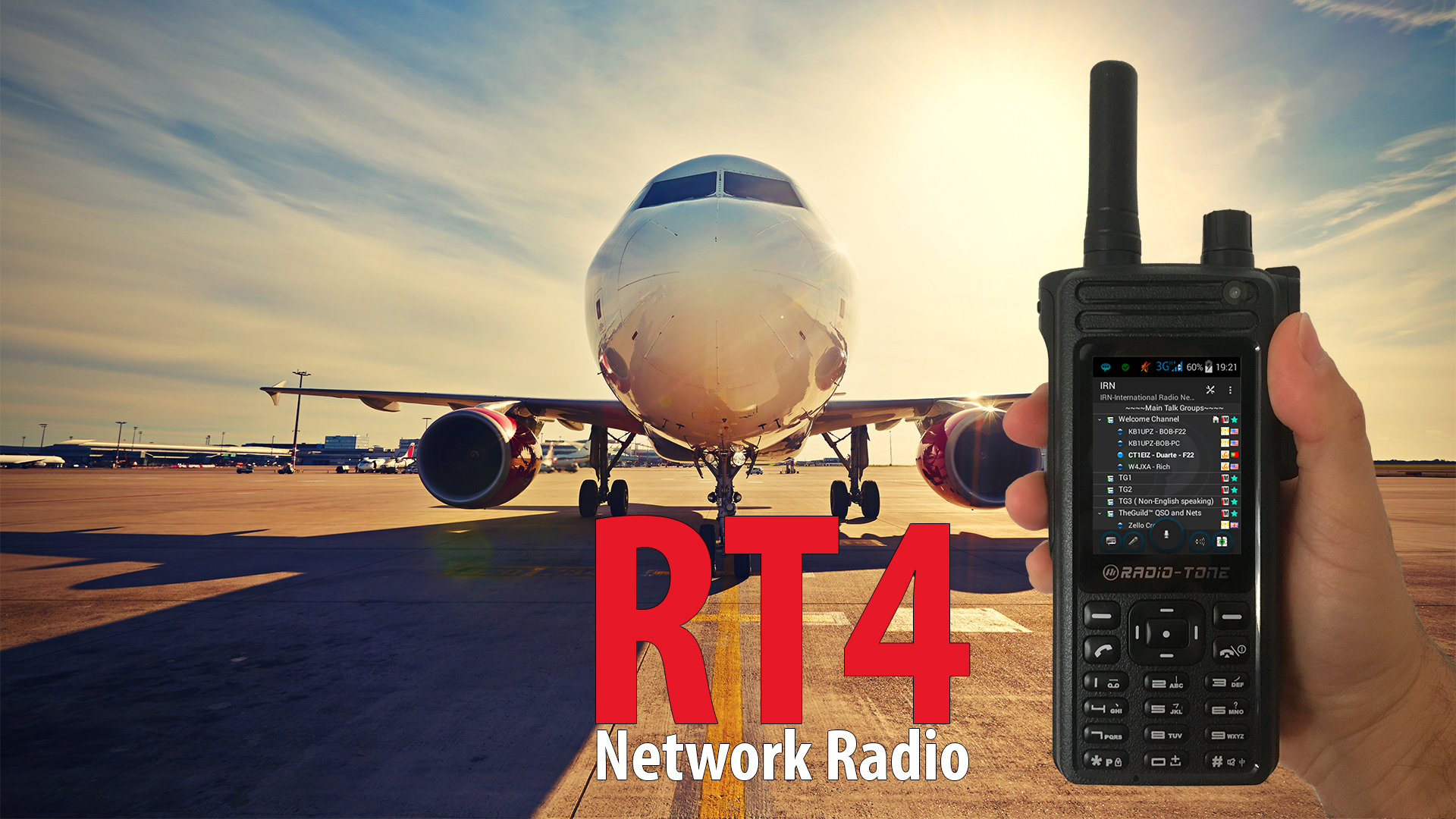
The Radio-Tone RT4 is currently the only 4G/LTE Network Radio that works in US and Europe. Unlike the Inrico T320, it offers US, Australia and EU/UK 3G/4G bands. This makes the RT4 the best travel companion. If you are new to Network radios, then you you could not have a better way to start!
A smartphone for hams
You can use it as a normal cellphone, access your e-mails, browse the internet, keep in touch your ham friends using IRN, Echolink, Zello and other apps.
Long lasting battery
It’s 4600 mAh battery will let you operate your radio for more than a day.
A video review
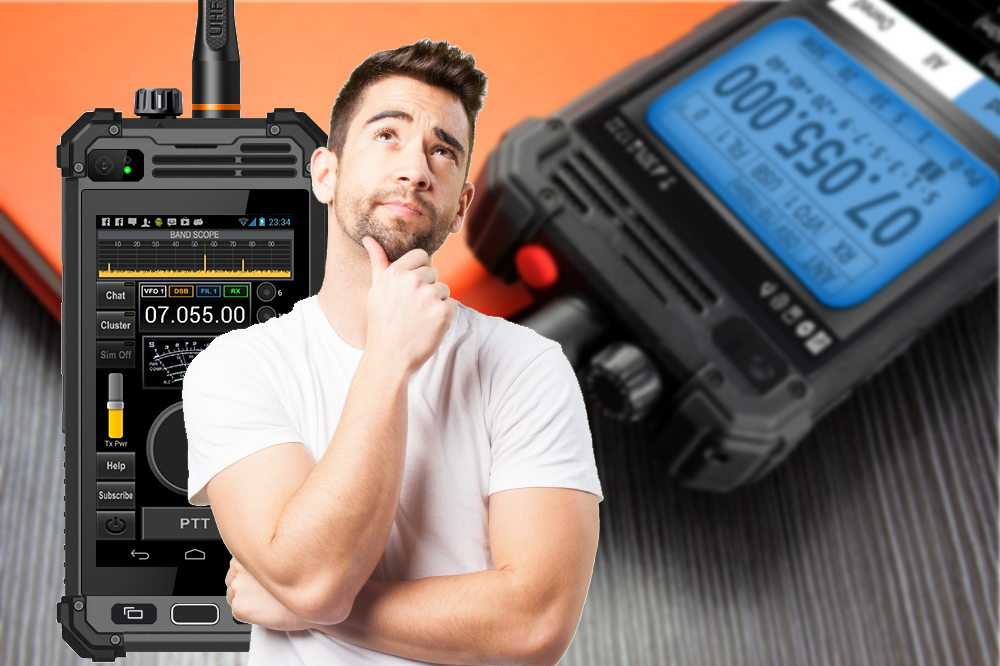
by Chris G7DDN
Earlier this year, I wrote a piece called “It’s not Real Ham Radio”.
It caused quite a stir and has since been disseminated worldwide, broadcasted and quoted in many places and in magazines too.
The basic premise was that, as new technologies come into the Amateur Radio Hobby, Hams often have difficulty adapting to them.
Change demands a response
This should, in reality, not be a surprise. You will be able to think of many instances in your personal and work lives when change has come along, often unexpectedly.
The problem is that change is a little scary – and this is because it demands we react in some way.
3 ways we react to change
Oftentimes our reaction is to dismiss any change and try to remain in the status quo, where we feel we know our “ground” and where we feel secure. The problem here is that any changes then may pass us by – we can easily become mired in what quickly becomes “the past”.
Other times we are forced to take on board things we may not really want to. (Most times though, those things turn out to not be as bad as we had expected, just different.)
And very occasionally, we actually get all positive and embrace change and become quite excited about it.
Time to ask the question in a different way..
So, revisiting my initial article, I thought it was perhaps time to address the question, what actually IS “Real Ham Radio”?
Immediately however, I sense a problem here – you could probably get a different answer to this question from every single Ham in the world!
A few examples
All these examples, and I could have gone on, are individual responses to the question “What is Ham Radio?”
What do you want Ham Radio to be?
To some degree, it seems obvious that “Real Ham Radio” is what you want it to be, what you make it for yourself.
Few hobbies have such a wide range to them, so many avenues to explore – I doubt that any one Amateur has ever managed to visit them all!
FT8, for example, is the latest digimode to appear on the scene and has been taking the Ham Community by storm it seems – although there are many, myself included, who don’t get a kick out of computer-typing modes. I love to see my friends enthusiastic for it however, as it keeps the hobby alive.
So can we define “Real Ham Radio”?
Frankly it is a problem!
I had some lengthy correspondences with a few Hams after my initial article. We had to work hard to find common ground that would satisfy each other as to how to define our hobby.
I had one excellent thoughtful debate with a US Amateur during which we were both challenged to think of how we defined the hobby. We managed to agree for the purposes of our email exchange on something close to this…
“Ham Radio is a hobby where a government-approved license stipulates what we must do to comply with our license conditions. But this relates solely to the emission of RF – anything else involved in the hobby will clearly not require a licence.”
So we pretty much distilled the definition to purely TX-ing on an Amateur Band legal in the country that issues the license and nothing else.
But does that actually define Ham Radio?
I have a client who is a Lecturer at a local University. He is a Doctor and his specialism is Microwave Technology. He has his own research profile and also mentors undergraduates. Like me he holds a G7 callsign. Unlike me though, he has never ever been on the air.
Is he an Amateur? By our initial definition, the answer would be no, simply because he chooses not to transmit on specific portions of RF.
By the way, this man is, in actuality, a true RF “professional” – he is not an amateur (with a small a) when it comes to radio. He knows more than most people world-wide about radio, especially Microwaves.
Let’s try again…
OK let’s amend the definition.
Perhaps we can say “A Radio Ham is someone who holds a license to transmit on specific Amateur Bands, whether or not they choose to do so.”
There – that’s better. We can now count my client in our new definition.
That also covers another friend of mine who is a genius at construction and making transmitters from scratch. He gets his kicks from our hobby by constructing – but he doesn’t ever go on air.
He just tests his home-built radios on dummy loads and then usually gives them away to those in the hobby who enjoy the operating side. It would be churlish to say he wasn’t a “Real Radio Amateur”, even though technically, he didn’t even have to pass his exam to become a Ham for what he gets from the hobby.
So here is another issue – can you be a “Real Radio Amateur”, or engage in traditional Ham activities, and not even take a license exam?
Where next?
This is getting more difficult – perhaps we can go back to the root word of “Amateur” – the Latin ‘amare’ – to love.
The difference between Amateurs and Professionals is that the former practices for love and the latter does it for a profession; in all likelihood they get paid for it.
We “love” radio so that definition might work, might it not? Maybe or maybe not!
After all, CB-ers are also lovers of radio. So are “Freebanders” and a lot of aviation enthusiasts.
In fact, a lot of other hobbies cross over to us in some way – model aircraft enthusiasts use RF in order for their hobby to work at all, for example.
So where are we to go?
We seem to be up a cul-de-sac with no way out.
And now…
So here we are and now Network Radios arrive on the scene and people are scratching their heads as to whether we “accept” them or not, as if we are some “guardians of real radio truth”!
I think the problem is that the technology is making it yet more difficult to define what our hobby actually is – and as newer and newer technologies come on stream, it may yet get even more so!
Perhaps we need to think “outside the box” a little more?
It’s not “Real Ham Radio”… or is it?
Network Radios certainly do not transmit on Ham Bands so wouldn’t fit into definition one.
However they could fit into definition two – you can use them like an Amateur would, if you choose to do so. If you choose to use Ham Protocols, fine, that is your prerogative.
They very much fit into definition 3 in the sense that we can make use of them in ways we see fit for our own “pleasure” and enjoyment.
More definition required!
A quick search for the definition of a hobby comes up with this – “an activity done regularly in one’s leisure time for pleasure”.
Well Network Radios fit that just fine too – and to boot, they also use RF at various points in the chain, albeit on cellular or wi-fi frequencies.
But there’s more…
However, remember that they also can crossover into Ham bands via streaming audio or via remote operation of, for example, HF transceivers. This clearly would require an Amateur Service licence.
Bizarrely then, there is a sense in which Network Radios simultaneously may and may not require a license!
Isn’t this getting more than a little weird? That’s what technological conundrums do for you!
Now there’s a challenge!
As I said at the start of this article though, change challenges us – it challenges the status quo.
Change has come many times in our hobby (this was the main point of my original article) and it is challenging us now in the persona of Network Radios.
Perhaps we need to broaden our definitions; in this way, we can encompass a lot more in our hobby and maybe even reach out to others and grow.
The alternative is to “batten down the hatches” and try to defend our own little corners of the hobby – ultimately, I think that road could conceivably lead us to extinction.
Change? Or Opportunity?
I like Seth Godin’s take on this… (if you have not heard of him, look up some of his TED talks)
He says, “Change is not a threat – it’s an opportunity. Survival is NOT the goal, transformative success is” (emphasis mine)
Paradoxically then, it is actually change that will ultimately drive the hobby forward.
Trying to just “survive” with only what we did in the past will mean we will shrink rather than grow.
Network Radios could well be part of these growth “opportunities” – isn’t it worth embracing them to see if they are?
What do any of us have to lose by doing so? Except maybe our fear of change?
May 2018
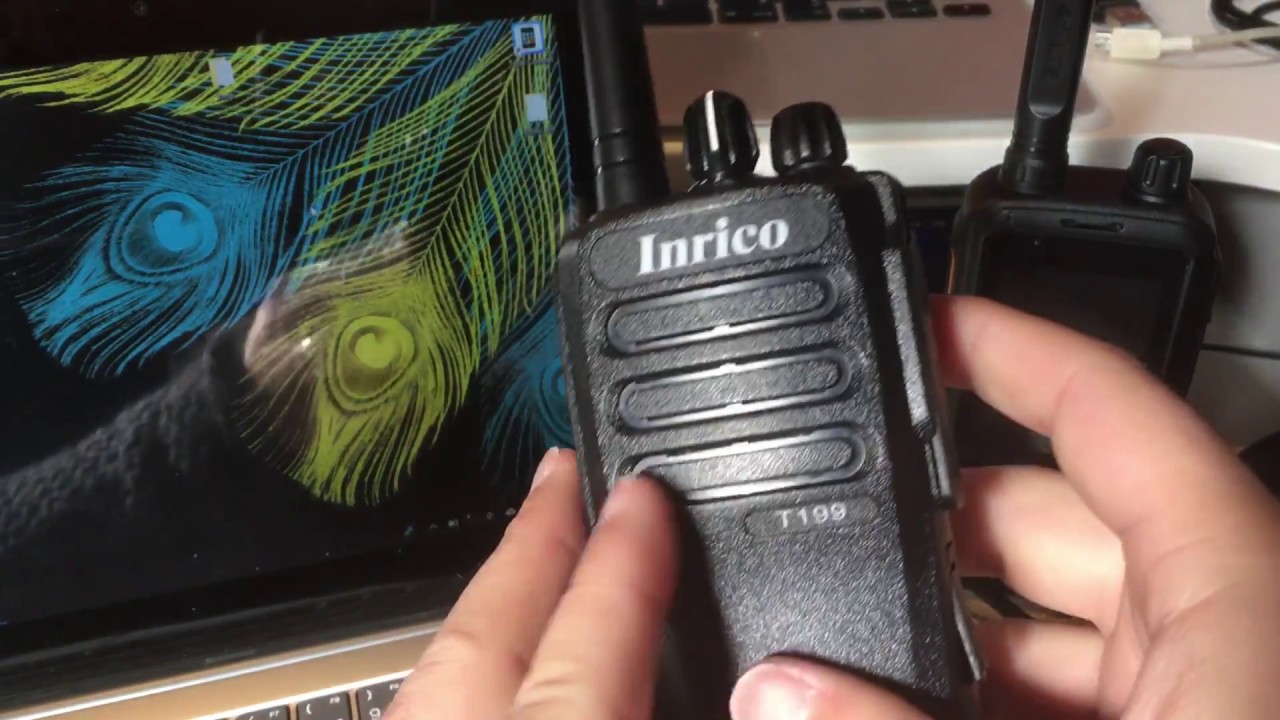
To change the APN settings of the Inrico T199 or the Inrico T192 there are two methods.




For example, for Straight Talk (AT&T) you should enter a new APN with the following settings:
APN Name Straight Talk
APN tfdata
Proxy leave empty
Port leave empty
Username leave empty
Password leave empty
Server leave empty
MMSC http://mms-tf.net
MMS Proxy mms3.tracfone.com
MMS Port 80
MCC 310
MNC 410
Don’t forget to save the new APN and change to it. Finally, Turn Flight Mode ON and the OFF again. You are ready!
First, you need the CP210x USB to UART Bridge VCP Drivers and the PC Settings software to run.
Make sure the T199 USB cable is connected, turn on the radio and run PCSettingsEN.exe. You will get a screen like this:
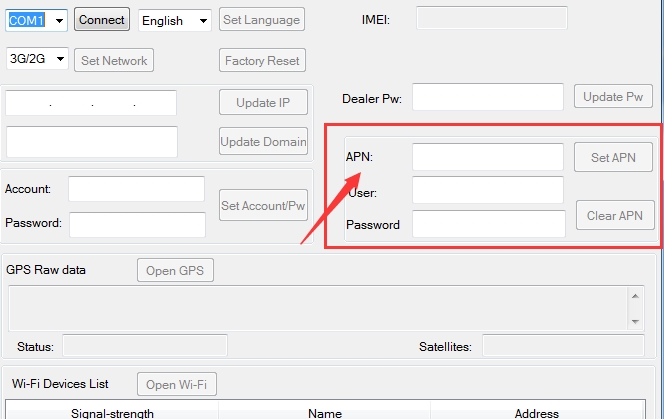
Make all the necessary changes and you are done!
Get up to date with the latest amateur radio news! Don’t miss the exciting news about Network Radios and the new Digital Modes, like DMR, D-Star and others. We are waiting for you! 🙂
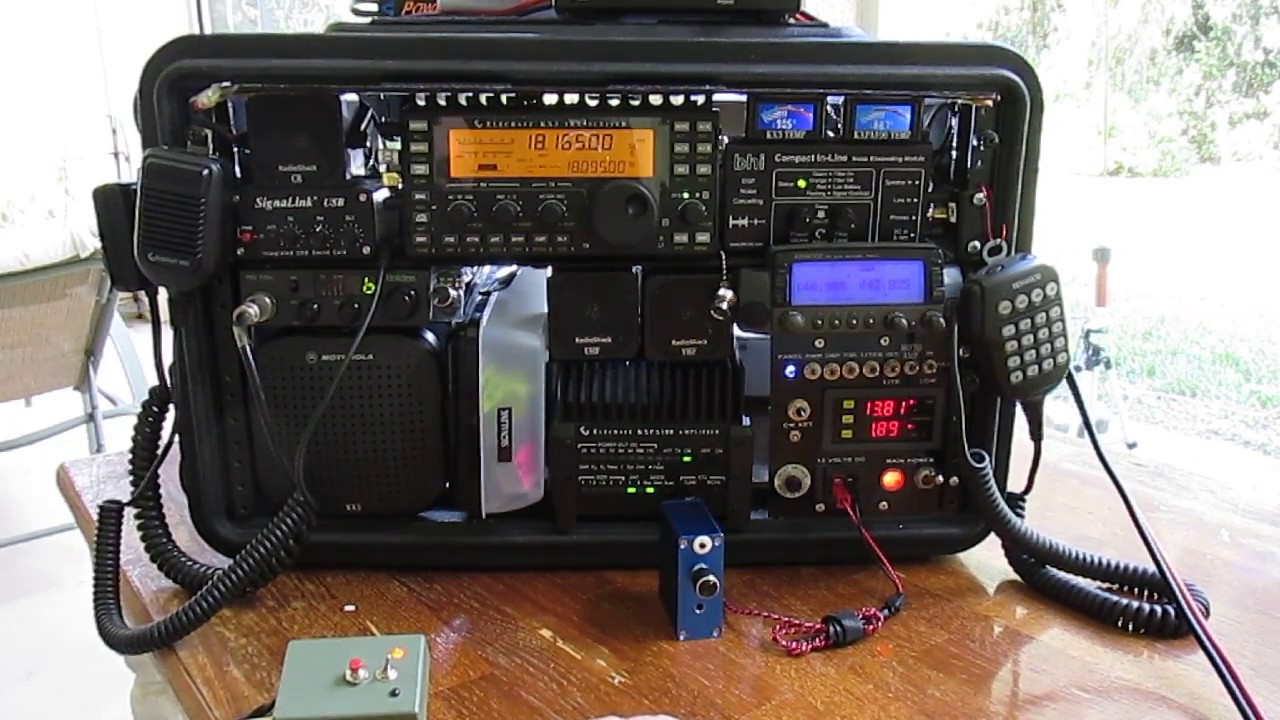
One of things that drew me (and probably you too) to Amateur Radio was the ability to make long-distance (or DX) contacts.
Back in the 1960s and 1970s though, for the majority of the population, talking with someone in another country was a complicated and expensive business.
One example…
I recall being allowed by my parents to join in Radio Nederland’s monthly “Happy Station” phone-in on two isolated occasions in the early 1970s.
In the UK, this involved calling the International Operator Service beforehand and booking the call. You were not allowed, for whatever reason, to dial it for yourself in those days!
You gave the number you wanted to call to the operator and tried to explain it would be good if they could call it at a certain time as it was a phone-in, but in truth, you were in the lap of the gods – you had to wait your turn in the queue!
Eventually though the Operator would call you back and then dial the international number for you. At some exorbitant cost, you were eventually put through (or not, in the case of the phone-in programme as the number was usually engaged by then – sheesh!)
Ham Radio – Something Special
So becoming a Radio Amateur in those days was not only a way of accessing a modern up-to-date technical hobby, it was also a way of using your radio skills to talk to people in far-off climes, learn about world geography, and receive those magical QSL cards that proved to your friends that you had achieved something rather special and that you really hadn’t made it all up!
You were somebody as a Ham!
UK-to-UK was impressive too
Even talking with other operators in the UK was quite something.
Before the days of Motorways (Freeways for our US cousins, Autoroutes in Europe) a journey across the whole country could easily take several hours. I specifically remember a journey my family made to the seaside in Devon in 1973 which took the best part of 8 hours on the old “A” roads…
As a Ham in those days, even to talk with a station in Devon, well, it felt like talking to someone on the other side of the world!
Kings of the Airwaves
So being a Radio Amateur back then was truly like being a “King of the Airwaves” – the world was literally your oyster!
When CB Radio and 446 MHz came along, it was easy to differentiate Ham Radio from those services – they were designed as short-range radio only and, unless conditions were exceptional (which they occasionally were on 27MHz!) they did not normally sustain long-distance propagation.
Those services were no threat to amateur radio as a result – and sadly, partly because of this, too many Amateurs at the time looked down on CB-ers – it wasn’t “real radio” and its operators were “inferior” and “didn’t understand proper radio”. (Heard that before anywhere, by the way?)
The tables have turned!
Now fast forward to today – and the tables have very much turned!
The Internet means that pretty much everyone has unfettered access to worldwide communication, in a variety of forms.
Text, documents, photos, audio, video – you name it, it can pretty much be sent worldwide and at relatively small cost.
In reality, the new Kings of the Airwaves in 2018 are…. all of us!
Radio Amateurs have now been joined by everyone else!
Old fashioned?
Is it any wonder then that Ham Radio is all too often viewed these days (by people outside the hobby at least) as old-fashioned, fuddy-duddy and the preserve of old men who prefer to live in the past?
No wonder we have an identity crisis – no wonder it is difficult to attract new blood!
If the best we can offer is “you’ll be able to help out with emergency communications when a natural disaster or war devastates your area” it doesn’t sound overly attractive!
Author’s Note: Please understand that this is not to denigrate those that do provide this service by the way; I am simply trying to show reasons why our hobby is not as attractive as it used to be – I have every respect for those that serve the community selflessly in such a manner, they are heroes in every conceivable sense of the word.
Perishing computers – they’ve ruined the hobby
Like it or not (and I too have a love-hate relationship with them) computers have revolutionised both society and consequently our great hobby too. And they are going to continue to do so.
Network Radios (which we can think of as “pocket SDR computers with a PTT button” as that is what they are) are simply one more evolutionary part of the journey.
They allow us to access the richness and colour of Internet propagation, while existing in a package that we already understand and can therefore use.
Now we can work other Hams anywhere they have a connection to the network, if that is what we choose to do.
It’s rather like using the Internet as a massively combined set of repeaters, only they are not exclusive to Hams anymore – we share that service with the rest of the population.
Resistance?
And perhaps this is one reason there is resistance to this movement.
There was, and still is to a great degree, an exclusivity about holding a Ham Radio licence.
I remember working extremely hard for mine. I was, and remain to this day, very proud that I achieved it (with a Credit and a Distinction in the two papers I sat, by the way, as well a pretty flawless 12wpm Morse Test ;))
But in 2018 and beyond, a licence to transmit on increasingly noisy bands that require large antennas, which in turn causes friction with neighbours and conflicts with restrictive covenants, seems increasingly irrelevant to many Hams.
As a result, it appears that many have voted with their feet and left the hobby altogether.
A growing hobby, but not as we know it?
Network radio does not suffer from these problems however. And though we may not regard it as “pure” as Ham Radio was in the past, it is helping keep the hobby alive.
Indeed, if what I am seeing is correct, it is actually growing it!
Every day, I am hearing Hams coming on the Network saying things like…
“I’ve been on the radio more in the last week that I have in the last 10 years.”
“I never thought I would use Ham Radio again till I came across this channel.”
“This has completely rejuvenated my hobby.”
“I haven’t got my Ham licence yet, but I’m learning a lot from talking with you guys and I am going to enrol on the next course.”
A lesson from Ancient Rome?
What was it that was said about Nero – that he “fiddled while Rome burned”?
Regardless of the historical accuracy of that statement, I wonder if there is a sense of something similar happening within our hobby.
Are our traditional bands gradually slipping away from us under piles of noise?
Are people leaving Ham Radio because “it isn’t what it was”?
Does the thought of erecting a new antenna sound less exciting than chatting with the family on social media or checking your news feed?
If the answer to any of those is yes, then let me ask, are Network Radios possibly one way we can piggy-back on Internet propagation and bring our hobby further into the 21st century?
Running out of time…
If it is, or even if it isn’t, we had better be quick with something!
Two decades of this century have almost gone by and with arguably more than 50% of Amateurs unlikely to be on this planet by the end of the next two decades, time has been running out for the hobby for some time already…
Radical solutions?
No one is suggesting that Network Radios are the answer to all the issues the hobby faces. Clearly they are not.
But they are already playing an increasingly growing part in the hobby and a positive one, from what I am experiencing.
We lose precisely nothing by embracing what they can do for us – and they just may be an opportunity that we cannot afford to pass up.
Catch you “on the network”?
May 2018